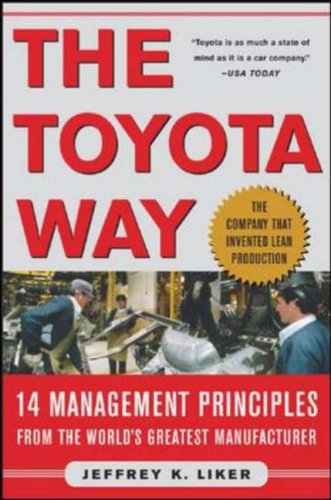In part 1 of this series, I talked about the lack of maturity in the product management role in technology companies. Computer technology and software themselves are rather immature, and given the rate of change in the computer technology industry, that immaturity will be here for some time.
Maturity takes time
It took over 80 years — from the introduction of Ford’s Model T in 1908 — for the automobile market to reach a level of what I would call maturity. And by maturity I mean the ability for manufacturers to consistently produce high-quality cars and trucks that consistently deliver value and address market needs. OK, not all car companies do this, 🙂 but companies like Honda and Toyota certainly do and they have proven that it is possible to not only systematically do this, but to do it even in the face of severe economic and political obstacles.
I recently got rid of my 12 year old Honda Civic. We bought it back in 1995 just after we had our first baby. Later, when we bought a minivan (Honda Odyssey), the Civic became my daily commuter car.
I drove that car every day to work and back for about 10 of the 12 years: on average about 70 km per day. I would have kept driving it, except that a few weeks ago, someone drove into the side of my car as I was driving home. It was dark, and raining, and there was heavy traffic on the road. Luckily no one was seriously injured. After over 220,000 km, I had to turn in the keys on the Civic.
Recently I picked up my replacement car. It’s a great little car and driving it to work is easy. And guess what, it’s a 2003 Honda Civic. Yes, I went out and bought a newer version of the same car. And why wouldn’t I?
My previous Civic worked, plain and simple. It didn’t require special maintenance of any kind. I’m not a great car owner to be honest. I’m not always timely with my oil changes. I don’t check the tire pressure as often as I should. But my first Civic kept on working over the 12 years and had someone not run into me, I wouldn’t have gotten rid of it.
And coincidentally last month, Consumer Reports named several Honda and Toyota models as “Good Bets” for vehicles to last for 200,000 miles (320,000 km). Funny how no American makers made the list.
And why would they? The Japanese auto makers have transformed the automobile industry in the last 35 years. From a humble start selling low priced, low quality cars, both Honda and Toyota have embraced continuous improvement in all aspects of their design and manufacturing process. Numerous books have been written about these companies particularly Toyota:



So what does this have to do with software product management? Everything.
Product management must keep the process of continuous improvement in mind at all times. This not only means continuous improvement in the products delivered to the market, but continuous improvement in the processes, both internal and external, that deliver those products to market.
This is where the function of Product Management must be considered as opposed to the role of Product Manager.
Many companies mistake the two as being the same and that is a source of problems. Consider the analogy of the function of Engineering and the role of a software engineer. The former includes the latter, but there are other roles in engineering, such as architect, development lead, interaction designer, tester etc. that help compose the role of Engineering in the company. Each of these roles plays a well defined part in ensuring the output of Engineering meets demands and expectations. The same is true for the function of Product Management.
Software Product Management must focus on optimizing the business side of software, ensuring that the R&D investments made in developing product are the best ones given available information and that the processes used to roll out and take products to market are working to maximize the return on those investments.
Granted, this is not how all software companies view Product Management, but to be honest, they should. Because in reality, if Product Managers aren’t doing this then who is? Finance? Marketing? Sales? Sr. Management? Sr. Management is responsible for the overall business, and in small, single product companies, that may overlap completely with the business role of the PM. But in any company that has multiple products, Product Management must be focused on optimizing the business of the products and product lines they manage.
Now I’m not saying that Product Management should ignore the technology. No, that is a key aspect that needs to be addressed, but one shouldn’t assume that the same Product Manager, who is looking out for the overall strategy and business objectives of the product or product line can also focus on the technical details of the product as well.
In the part 3, I’ll delve into how to decompose roles in the Product Management function to maximize the output of the team.
Saeed
The rest of the series
Product Manager vs. Product Management (part 1)
Product Manager vs. Product Management (part 2)
Product Manager vs. Product Management (part 3)
Product Manager vs. Product Management (part 4)
Product Manager vs. Product Management (part 5)
Product Manager vs. Product Management (part 6)